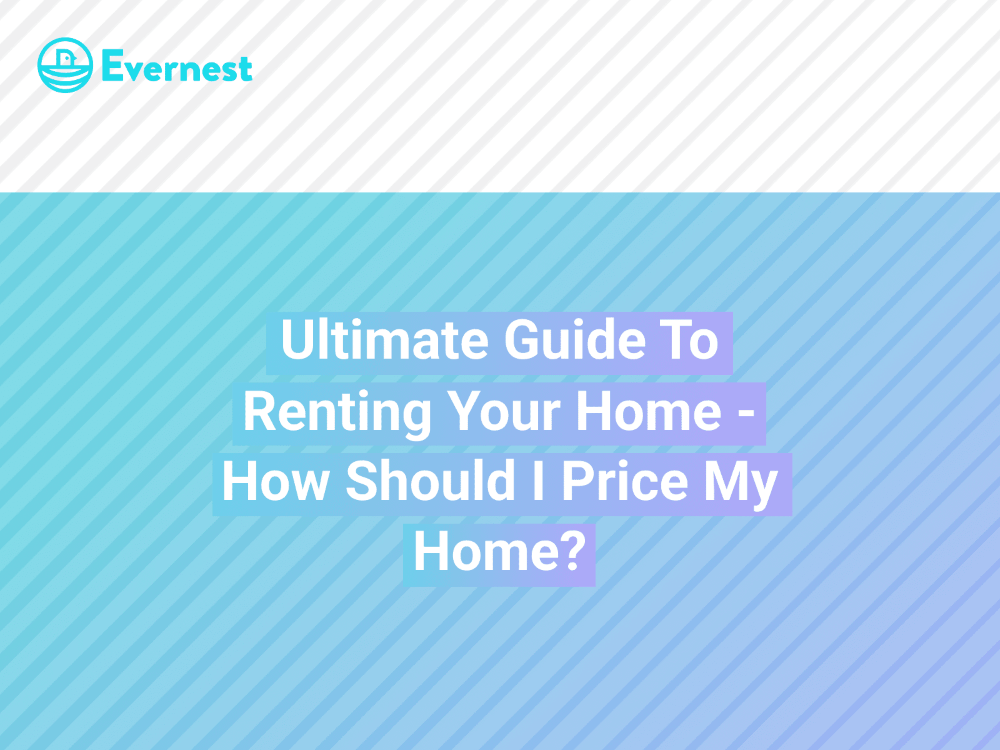The Ultimate Guide To Renting Your Home - How Should I Price My Home?
One of the first things to do when renting your home is set your rent. Rent your home for too low, and you might not profit. And even if you are profitable, you’re missing out on more rental income. But if you set the price too high, you’ll have a costly vacancy. We published this guide to help you charge a rental price that maximizes profit potential and minimizes vacancies.
Signs Your Rent is Too High
Here are a couple of signs you’re charging too much rent:
No Calls or Showings
One of the most obvious signs your rent is too high is you get little to no interest in the property. No calls or showings could mean you’re charging too much. At the end of the day, a renter will only pay a specified rent if they believe the property's value justifies it. You can either make improvements to justify that price or reduce it to fill the vacancy.
High Resident Turnover
People need a place to live — if the rental supply is tight, they may pay a higher price to have a roof over their heads. So it’s not impossible to charge a higher price. But if you notice residents frequently leaving, rental prices could be a factor. They might be finding comparable properties charging less that fit what they need. Now, this isn’t necessarily because you set rent too high initially. You might have started renting when prices were elevated overall. The market may simply have shifted in a way that reduced rents to decline.
How to Calculate A Good Rental Price
1. Price My Home: Research on Zillow
Start by searching for properties in your area on Zillow. But not just any properties — you want to find those similar to yours. Look for homes that have the same or similar:
- Number of bathrooms
- Number of bedrooms
- Size in square feet
For example, if you have a small, single-story, 2-bed, 1-bath home, a large, 2-story, 4-bed, 2-bath home does not offer useful pricing information. Age matters, too. Homes built recently will be able to demand different rates than homes built decades ago. So filter by the year your home was built. Examine each listing. Use pictures, videos, and virtual tours (if possible) to look inside the home. You want to see if the properties are as updated as yours to see if they are comparable. All of this said: These homes may not be listed at good rents, either. You can’t tell which homeowners put in a lot of research or which ones took a stab in the dark. However, Zillow’s a good starting point. Price trends or patterns can point you in the right direction.
2. Price My Home: Visit the Department of Housing and Urban Development’s Website
The HUD’s Office of Policy Development and Research researches real estate markets and publishes a Fair Market Rents report yearly. The FMR documentation system lets you select your state and county, then presents information about fair market rents for homes ranging from “efficiency” to 4-bedroom properties. Your exact rent may differ based on your home’s specifics. But comparing HUD data against Zillow can be useful in narrowing in on a reasonable rental price.
3. Price My Home: Drive Around Your Neighborhood
After researching online, head outside for a drive around your neighborhood. Look for yard signs containing the names of realtors or property management companies. Take note of their addresses. Then, take your list of neighborhood homes back to the Internet and research each one. See which ones, if any, are currently available for rent. Inquire about their rental rates if possible by contacting the property manager or realtor on the sign. This step is important if you live in a really hot market. Some private landlords might not list on Zillow if they have no need. So hitting the neighborhood streets could give you insights the Internet can’t offer.
4. Price My Home: Use Rentometer.com
Rentometer.com is a free online rental comparison tool. It offers two “tiers” of rent comparison:
- Renter: Very simple search. You enter your address, current rent, beds, and baths. As the name implies, this is designed for residents to see if they’re overpaying. But it’s useful for you as the owner as well.
- Professional: This one’s designed for real estate professionals, so it offers a far more detailed analysis. You can select other information like the radius you’d like to search in, building type, square footage, and more.
Once again, any tool in isolation won’t necessarily give you a complete picture of your rental market. Cross-reference your Rentometer results with Zillow, the HUD’s site, and your “on-the-street” research.
5. Price My Home: Look For “White Elephants”
Many properties have certain drawbacks you can’t ignore nor change. These are called irreconcilable defects — or, as we call them at Evernest, “white elephants.” Regardless, these can detract from your property and force you to lower your rental rates. Let’s look at a few examples of these “white elephants”.
Busy Streets
Properties located on busy streets may not rent for as much as similar properties in less busy areas. Busy streets mean more noise, dust and pollution, and less privacy. It’s also harder to pull out onto a busy street in a vehicle. In a similar vein, parking on a busy street is more difficult and increases the risk that someone hits the parked vehicle. It’s true that a busy street may mean the resident has easier access to employment amenities. However, residents will likely pay a little extra to live on a quieter street nearby.
Steep Driveways
Properties with steep driveways tend to rent for less because of the weather — especially in areas with harsh cold seasons. Snow and ice can make pulling into the driveway difficult. Cars can get stuck. Vehicles can slide down the driveway without the driver’s control. It is also more dangerous to walk on when ice forms. Additionally, the curb may be steeper to accommodate the driveway. This increases the chance of vehicles scraping the curb. Over time, this can damage vehicle components like the axle, bumper, engine cover, and oil pan.
Power Line Proximity
Power lines pose several issues that can decrease a property’s value and the rent you can charge. First is the aesthetic reasons. Power lines may be essential, but they’re unsightly. Health and safety may be the bigger concern, though. There are widespread concerns about electromagnetic radiation from power lines contributing to cancer. Whether or not this is scientifically accurate doesn’t matter — residents won’t want to pay as much if they believe they’re taking health risks. Then, there’s the risk of downed power lines, which are extremely hazardous. Because of this, they can hamper a resident’s ability to leave the property or neighborhood if a downed line is blocking a road. Worse, a power line could fall directly onto your property if too close. Homes close to or underneath power lines may have restrictions on landscaping and development projects. You won’t be able to make certain improvements that could increase your rental income.
Odd Layout
There’s a reason real estate developers use similar standardized layouts all across the country. They work well. Residents like familiarity when it comes to their home’s layout. So if your home has a funky layout — perhaps it’s a custom build — you might struggle to charge the same rate as “comparable” properties. All that said: You might find an oddball resident who loves your property’s unique layout and pays market rent. But don’t get your hopes up since you’re more likely to find residents who prefer a regular layout.
Less-Updated Property
If most comparable properties have been modernized, but yours hasn’t, you naturally will not be able to charge as much. In this case, you might consider investing in improvements and upgrades if you plan on keeping this property in the long-term and the math makes sense.
One Last Tip… Call a Property Manager
Property managers like Evernest are in the business of setting rental prices and filling vacancies. With a property manager, you get a team of experts with plenty of experience doing this. If they’re located in your property’s market, that’s even better. Also — as a property owner, your biases toward your property may (knowingly or unknowingly) cause you to set rent the market doesn’t agree with. You might hear that your neighbor is charging $X, so you deserve to charge $X. But you must appeal to the market. Setting rent too high as a result of biases can cost you in the form of vacancies. A property manager can be your objective third party. They can shoot straight about what rent you truly can afford to charge. So if you’re ready to set your rental price and find a superb resident, Evernest is here to help you out. Select your market on this page to get started.


